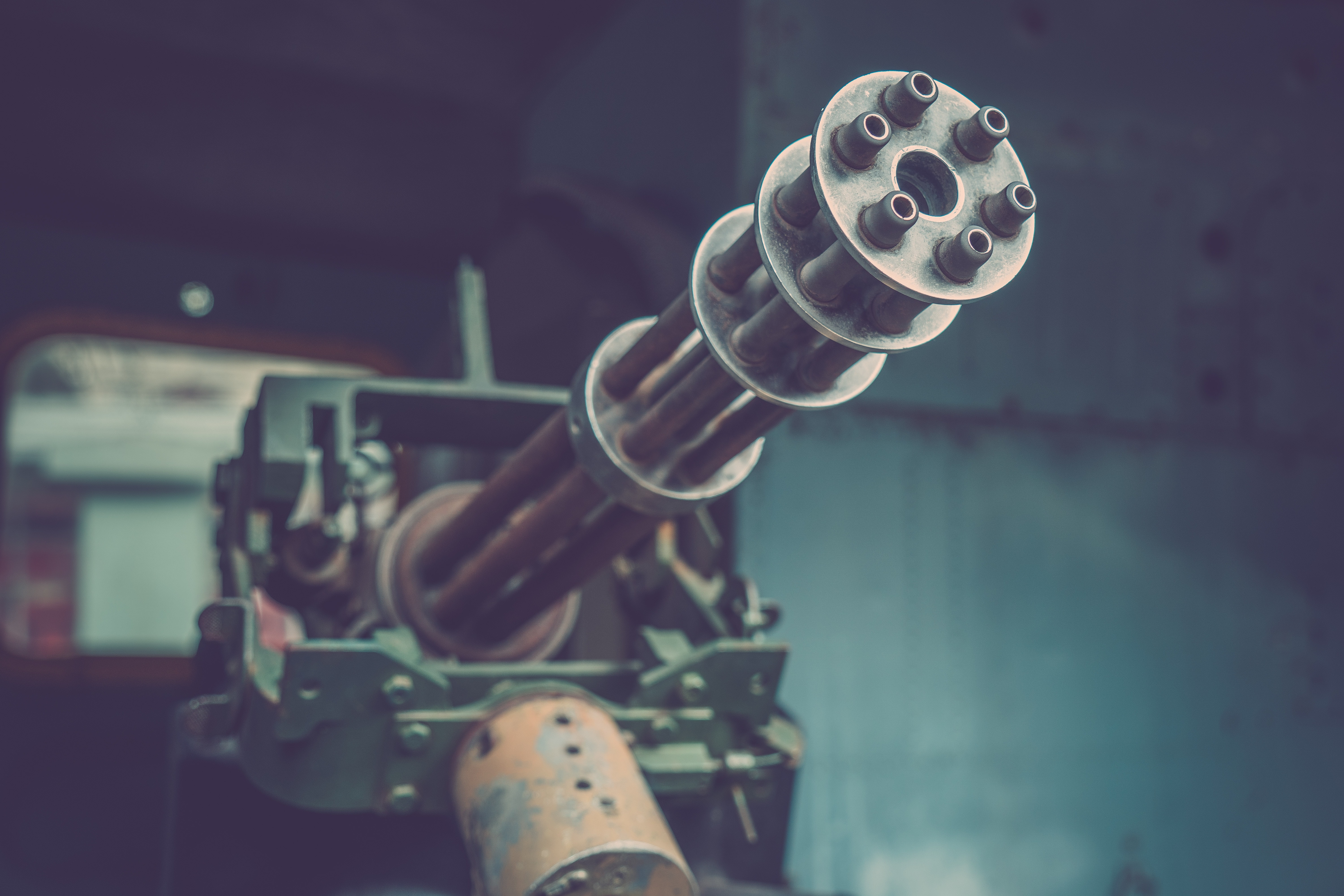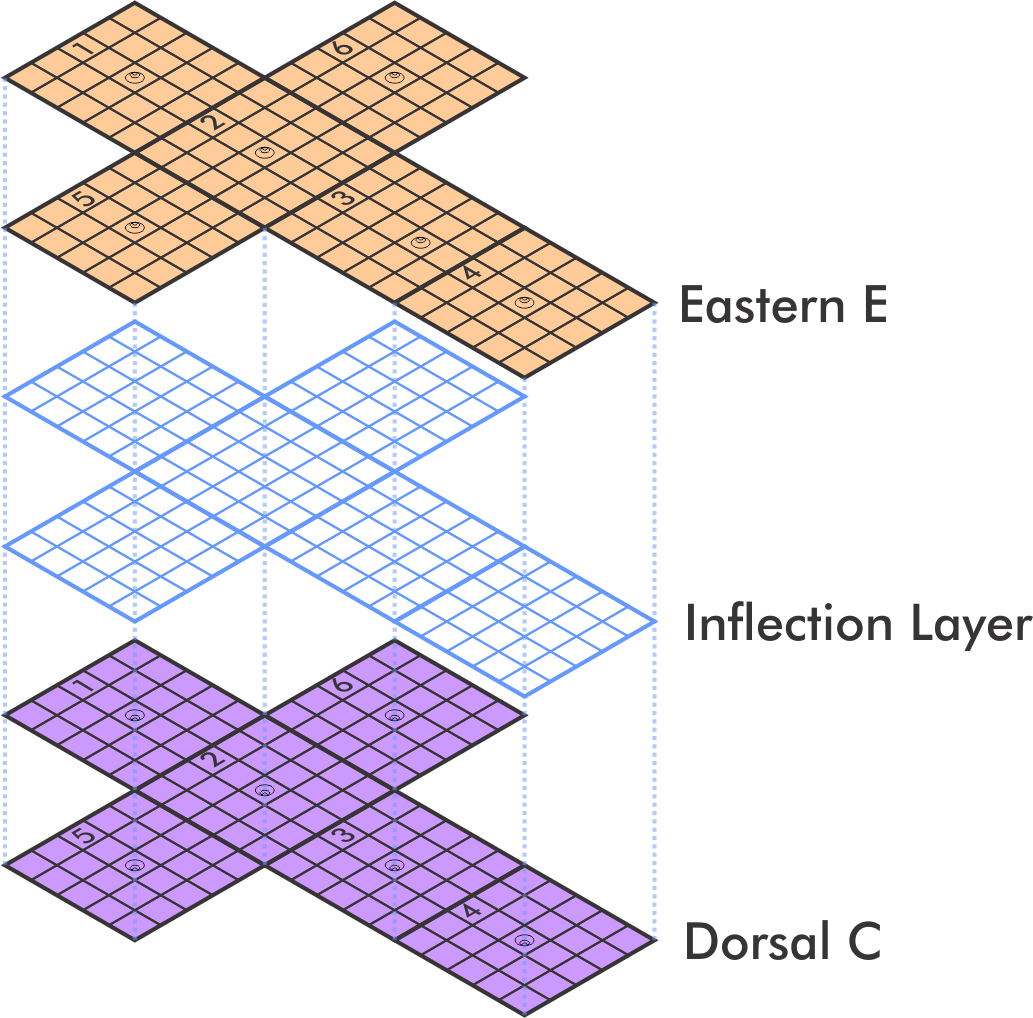Gunnery Safety
HICKORY: Alright, recruits, listen up! I know most of you have come to us from prior military experience, so none of this is going to be a surprise. That said, the folks in the insurance department go over our policies with a gem-cutter's loupe and won't let us skate by without at least discussing range safety. I'll keep it succinct, so you best be grateful!
AUDIENCE: <Murmuring>
Ok, settle down, lads. Yes, you, in the back.
AUDIENCE: <Inaudible>
"Succinct." It means "short and to-the-point." You know you have to be literate to work here, right? Anyways, that's not important. On to the safety brief!
(Hickory continues to discuss the usual topics, including the importance of trigger discipline, the various range commands, the responsibility of everyone to call out dangerous situations, treating every weapon as loaded, and the importance of not pointing weapons at something one doesn't want to obliterate. At length, the question of backdrops comes up.)
Now, in case you hadn't noticed, there are additional environmental factors to consider when firing at long ranges. Most folks who grew up shooting on a farm somewhere or hunting on the weekends never had to think about how the weird geometries of the Manifold are going to affect their shots, and Gods bless them for doing what they love. But those kinds of shooters either have the benefit of flat land or are really only plinking targets at sub-mile ranges. Not us! As the 'good guys' who 'know what we're doing' we have to be more careful.
 High-powered weapons, like your crew-served or auto-armor weapons, have much greater power and, therefore, have a much longer effective range - and, of course, a much greater risk of collateral damage. When using these weapons, not only do you have to consider your backdrop in the immediate line-of-sight between you and the target, nor only do you have to consider the arc of your projectiles due to wind and gravity pointing towards the ground beneath your feet, but you might also have to consider circumvection blowing air up through a nearby commissure or the change in gravity due to nearby cube edges or vertices. We aren't expecting you to be a math wizard - except you artillerists, that is part of your job - but we do expect you to plan your shots around these factors. Yes?
AUDIENCE MEMBER 1: <Inaudible> versus the range of the weapon, is there really all that much danger to a round coming down the other side of an edge mountain?
HICKORY: Good question. Yes, it does matter, for the same reason we don't want you shooting straight up. Sure, terminal velocity and all that, but a 20mm lead round is a hefty boy, so it can still hurt you pretty badly if it's dropped from max height. Also, consider this: if you're shooting diagonally up an edge mountain's face, it might never actually reach net zero vertical velocity in the way a round fired straight up might. As it approaches the adjacent cube face, it's going to stop acting like it's being pulled down towards you and start being pulled down towards the face on the other side of the mountain. That trajectory is going to be a lot flatter than you'd expect - Terraceball players are gonna be familiar with this. So yes, especially near the mountains, the best place to point 'em is the dirt in front of you. Alright, you next.
AUDIENCE MEMBER 2: What about in aerospace? How are we supposed to guess where something's going to go in the heart of an inflection layer, where everything goes off into the infinite?
HICKORY: That's a sticky question, and I can't expect you to answer it in the middle of life-or-death fight. What I can recommend, though, is that you try not to direct your shots directly parallel to the inflection layer. The gravity up there's so weak that, if you aim 'down' towards one of the faces, the bullet's velocity will most likely overcome gravity and carry it whichever way you're facing. Even then, the danger to bystanders is still significant, so pick your shots very carefully.
Anything that spends a long time up there - as parallel shots are wont to do - might also come around to bite you or skysweepers in the ass later. Inflection layers 'tile,' which means a round fired in parallel to it can complete a 'circuit' of the layer and come back to you. Rounds up there only really have to contend with air resistance and currents, so they can go surprisingly far if not directed at a downward angle. Extremely high velocity rounds, and anything self-propelled in particular, might even keep killing power on their way back around. Yeah, don't do this if you can help it. I don't know about you, but I'm not much of a gambler. If you can't help it, though, try putting the enemy between you and something solid that can bleed off some of the bullet's speed.
High-powered weapons, like your crew-served or auto-armor weapons, have much greater power and, therefore, have a much longer effective range - and, of course, a much greater risk of collateral damage. When using these weapons, not only do you have to consider your backdrop in the immediate line-of-sight between you and the target, nor only do you have to consider the arc of your projectiles due to wind and gravity pointing towards the ground beneath your feet, but you might also have to consider circumvection blowing air up through a nearby commissure or the change in gravity due to nearby cube edges or vertices. We aren't expecting you to be a math wizard - except you artillerists, that is part of your job - but we do expect you to plan your shots around these factors. Yes?
AUDIENCE MEMBER 1: <Inaudible> versus the range of the weapon, is there really all that much danger to a round coming down the other side of an edge mountain?
HICKORY: Good question. Yes, it does matter, for the same reason we don't want you shooting straight up. Sure, terminal velocity and all that, but a 20mm lead round is a hefty boy, so it can still hurt you pretty badly if it's dropped from max height. Also, consider this: if you're shooting diagonally up an edge mountain's face, it might never actually reach net zero vertical velocity in the way a round fired straight up might. As it approaches the adjacent cube face, it's going to stop acting like it's being pulled down towards you and start being pulled down towards the face on the other side of the mountain. That trajectory is going to be a lot flatter than you'd expect - Terraceball players are gonna be familiar with this. So yes, especially near the mountains, the best place to point 'em is the dirt in front of you. Alright, you next.
AUDIENCE MEMBER 2: What about in aerospace? How are we supposed to guess where something's going to go in the heart of an inflection layer, where everything goes off into the infinite?
HICKORY: That's a sticky question, and I can't expect you to answer it in the middle of life-or-death fight. What I can recommend, though, is that you try not to direct your shots directly parallel to the inflection layer. The gravity up there's so weak that, if you aim 'down' towards one of the faces, the bullet's velocity will most likely overcome gravity and carry it whichever way you're facing. Even then, the danger to bystanders is still significant, so pick your shots very carefully.
Anything that spends a long time up there - as parallel shots are wont to do - might also come around to bite you or skysweepers in the ass later. Inflection layers 'tile,' which means a round fired in parallel to it can complete a 'circuit' of the layer and come back to you. Rounds up there only really have to contend with air resistance and currents, so they can go surprisingly far if not directed at a downward angle. Extremely high velocity rounds, and anything self-propelled in particular, might even keep killing power on their way back around. Yeah, don't do this if you can help it. I don't know about you, but I'm not much of a gambler. If you can't help it, though, try putting the enemy between you and something solid that can bleed off some of the bullet's speed.

by Rod Long







Comments